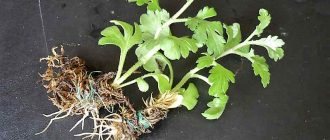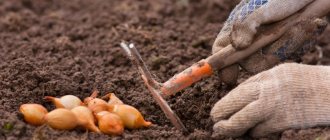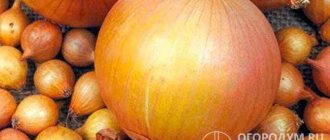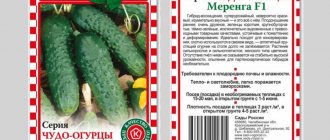Description of Indian chrysanthemum
Description of the plant:
- bush height 80-100 cm, there are specimens up to 1.5 m;
- stems simple;
- leaves are dissected;
- basket-shaped inflorescences, the diameter of which is from 25 cm;
- The color is golden with a yellow tint.
As a bonus to external grace - ease of care and a number of useful properties that can be used in folk medicine
For your information! The color of the petals depends on the variety.
Briefly about the history of appearance
The homeland of the Indian chrysanthemum is Southeast Asia. The original flower is yellow. The plant was used to decorate gardens, in folk medicine and cooking. The flower came from India to Japan thanks to Buddhist monks. Subsequently, the beautiful plant spread throughout the world, and other varieties began to be cultivated.
Beneficial features
Chrysanthemum indicum is known for its healing properties:
- increased appetite;
- treatment of Parkinson's disease;
- elimination of migraines;
- improved mood;
- positive effect on the subcortical region of the brain;
- relief of fever and fever.
Note! The beneficial properties of the plant are explained by the presence of vitamins, flavonoids, and essential oils in its composition.
Photos of Indian chrysanthemums
Indian chrysanthemums are the real queens of autumn
Indian flowers go well in mixed plantings
An improvised high flower bed with chrysanthemums looks great as an element of garden decor
Blooming Indian chrysanthemums will add color to the garden in autumn
Pots with Indian chrysanthemums can be put indoors for the winter
Indian chrysanthemums can be combined in flower beds in various patterns
Common varieties
Chrysanthemum Bacardi - planting and care in open ground
The following varieties of chrysanthemum have gained the greatest popularity among gardeners:
- Aurora. The inflorescences are flat, orange in color. Flower diameter is about 10 cm, bush height is 1 m;
- Snow elf is a pompom, terry white chrysanthemum. The diameter of the inflorescences is from 5 to 8 cm;
- Artist. The petals are bicolor, combining white and pink shades;
- Tsiya. The color is dark burgundy, the petals are bordered with a white stripe, the core is green;
- Carnival. The flowers are double, painted in a variety of shades.
Important! Each variety has its own flowering time.
A combination of several varieties looks great in flower beds
Planting Indian chrysanthemum seedlings in open ground
Young seedlings are afraid of frost, so they are planted in the ground after the onset of warm weather. The distance between the bushes is 50 cm. Flowers prefer loose soil and abundant watering, but they begin to get sick if the soil is poorly drained and the soil is acidified.
For the winter, the bushes are dug up, the stems are cut off at a height of 20 cm, placed in boxes, and covered with damp sand. Keep in the cellar at a temperature of +2 o C without watering. Chrysanthemum grows well in the house; it is one of the few crops that can tolerate the dry air of an apartment. Indian chrysanthemum seeds are planted in the ground in May according to a pattern of 15 cm by 30 cm.
Caring for chrysanthemum Indicum
In order for the plant to delight with abundant flowering, it must be located in a well-lit area. The flower does not like shadows.
Watering
Chrysanthemum chamomile - what kind of flower is it?
Watering is required abundant and frequent using rain or settled water. The soil should not be allowed to dry out, as this will result in weak or absent flowering. In hot weather, daily watering is allowed.
Feeding
First application of fertilizers 6 weeks after planting. Mineral and organic fertilizers are used.
Important! Diluted fertilizers are poured strictly to the roots.
Trimming
Pruning is carried out in the fall, when all the buds have fallen. The bush is cut at the root. Pruning is the stage of preparing a flower for wintering.
Transfer
Replanting is required annually, in spring. Chrysanthemums need to be planted each time in a new place in nutritious soil.
Preparing for winter
The bush is pruned at the root and dug up with a large lump of earth. Storage is carried out in a cool room. Occasionally the earthen lump is moistened.
If you leave the bush outside for the winter, you need to trim it and cover it with spruce branches.
Indoor chrysanthemums
Indian chrysanthemum can grow indoors. In order for the chrysanthemum to feel good in the pot, it is necessary to monitor the condition of the soil. It should be loose, not acidic, and consist of garden soil, humus, and sand. For good flowering, home flowers need to be fed with fertilizers twice a month. During the period of leaf blossoming, nitrogen baits are used, and as soon as the flower begins to form buds, potassium-phosphorus baits are used.
The flower pot should be placed in the house so that the air temperature is no more than 15 degrees above zero. The ideal location for it would be north-facing windows. Access to sunlight is required for good flowering.
Care, planting and cultivation of mulberry in central and other zones of Russia and Belarus, black mulberry and other species with photos
Methods of propagation of chrysanthemum indicum
Propagation is carried out by cuttings or seeds.
Growing from seeds
Growing chrysanthemums is not difficult. The seeds are immersed up to 1 cm in moist soil. The main thing is sunlight and regular hydration. When up to 8 leaves appear on the seedlings, the flower is pinched so that the chrysanthemum becomes a bush chrysanthemum. You can collect the seed material yourself or purchase an Indian chrysanthemum mixture.
Note! Germination of mixed chrysanthemums from seeds is bad because the varietal characteristics are not completely transmitted.
Rooting cuttings
It is easy to propagate a flower from cuttings:
- A cutting up to 20 cm long is inserted into moist, fertilized soil.
- The planting material is covered with film on top.
- Aerate the soil every day and water as needed.
For speedy germination, it is recommended to periodically apply nitrogen fertilizers.
Planting and care
Chrysanthemum globulus
Plants with large flowers can be quite difficult to grow on your own. However, if you follow the recommendations of experienced flower growers, it seems quite possible to grow all kinds of varieties of this type of chrysanthemum.
There are two ways to grow them:
- from seeds;
- cuttings.
Indian chrysanthemum seeds
Growing varieties of chrysanthemum Indian mixture from seeds requires compliance with the following rules:
- Since many are interested in the question of whether the Indicum Mix chrysanthemum can grow in open ground, it is worth noting that yes, it can, but only seedlings are planted in open ground.
- Before placing the seeds in the soil, they are wrapped in a damp cloth and stored in this form for several days. The temperature must be at least 5°C.
- Wet seeds are planted in the soil.
- The soil in the container should also be moist.
- The seed material is not covered with soil to ensure penetration of sunlight.
- The boxes with planted seeds are covered with film, ventilated from time to time.
- As soon as they germinate, the film is removed and the soil is loosened.
- Seedlings are placed in open ground after warm weather sets in.
- The bushes should be located at a distance of 50 cm from each other.
- The soil requires regular loosening and watering.
- Flowers need full access to light.
- At the end of the flowering period, the stems are cut off, leaving 10-20 cm. Then the plants are placed in containers with moistened sand and stored during the winter at a temperature of 2-5°C.
When growing Indian chrysanthemum using the second method, you must follow the following recommendations:
- The length of the cuttings should be at least 20 cm. In the spring they are rooted into the ground.
- The seedlings are covered with film with the possibility of regular ventilation. Cellophane should not come into contact with the cuttings.
- As soon as the flowers sprout, the film is removed.
- The shoots should be fed with nitrogen-containing fertilizers.
Another method of propagation by cuttings is that the flowers are first germinated in pots until they are completely rooted and only then planted in the ground and covered with film.
Important! The best time to plant Indian Chrysanthemum is May.
Both at home and in the garden, caring for the Mix chrysanthemum involves regular watering, fertilizing, pruning and other necessary measures. The variety does not tolerate high temperatures. For normal growth and long flowering, the temperature must be maintained at 10-15°C. In summer, the pot with the plant is placed in a dark, well-ventilated place, and in winter it is stored at 5°C.
Chrysanthemum Mix does not tolerate direct sunlight, so it is best to place the flower near eastern or western windows.
The plant loves moisture, so it needs to be watered once every 3 days. To prevent the flower from rotting, you should not water it too much. It is allowed to moisten the soil with tap water, but before doing this it must stand for 2 days. Periodically, the chrysanthemum is sprayed with clean water.
Chrysanthemum Mix
The first pruning is necessary for the correct formation of the bush. To do this, pinch the chrysanthemum a couple of times, which stimulates the growth of side shoots. The last time the tops are cut is 2 weeks before flowering. The following pruning, in which all shoots are removed to a level of 10 cm, is carried out before placing the plant in a dark, dry, ventilated place for the winter.
Possible problems in cultivation and pests
Chrysanthemum Indicum is very easy to grow and care for. The only problem you may encounter is lack of flowering.
The reasons for the lack of buds are lack of lighting, improper watering, lack of fertilizing
Possible pests are aphids, spider mites. To destroy them, the bush is treated with a soap solution.
Homemade chrysanthemums are the most beautiful flowers. They are unpretentious and do not require the creation of specific conditions. All the plant needs is watering, sun and fertilizer, and then the chrysanthemum will delight you with the bright fanfare of its inflorescences.
Annual chrysanthemums
It turns out there are some! They bloom already in July and bloom continuously until frost, delighting us with bright simple, semi-double or double basket-like inflorescences. Unpretentious, withstands both cold and drought. To start them in the garden, you need to sow the seeds directly into the ground in May. An open, sunny place with light, not waterlogged soil will be good for them. Shoots appear within a week, grow quickly and bloom in late June - early July.
Most commonly grown species
Chrysanthemum prominent
A large plant about 100 cm high with openwork foliage. It blooms in early July with large flowers (up to 11 cm in diameter). They can be double, like the Annette variety, or simple white and yellow “daisies.”
Chrysanthemum sativa
A very unpretentious plant native to Southern Europe. The stems are straight, slightly branched, about 60 cm high. The flowers are simple, yellow or white; in varietal plants, additional color appears in the form of red tips of the petals (the “Zebra” variety) or the red color predominates (the “German Flag” variety). Flowering is long - from June to October.
Chrysanthemum odorless
A variety called “Wedding Dress” is grown in the gardens. This is a low (20 cm) strongly branching bush, decorated with snow-white, densely double flowers.
Chrysanthemum navicular
The name was given because of the unusual appearance of the seeds, similar to a boat with a keel, hence another name - keeled. The flowers of this species are the most elegant: around a flat dark center there are reed petals with multi-colored stripes-rings. Their colors are so varied that a flowerbed of chrysanthemum navicularis looks like an iridescent gem.
Vegetable chrysanthemum: cultivation
“Eastern Guest” is not picky in growing and does not require careful maintenance and care, but their development is very dependent on the soil. It must be fertile, so it is better to plant vegetable chrysanthemum after any vegetable crops for which organic fertilizers were applied in the previous season. On depleted soil, the plant blooms ahead of time, which is unacceptable for vegetable varieties; they grow weakened, and their green mass quickly becomes coarse.
This crop is sown in early spring, in the second ten days of April, in a greenhouse, greenhouse or greenhouse. In early May, the seedlings are transferred to open ground.
Holes for seedlings are dug at a distance of 15-20 cm. The optimal planting method is in nests, 4-5 pieces with a clearance of 25-30 cm. Many gardeners take advantage of the fact that this plant is not only nutritious, but also decorative and blooms until frost, and they plant it not in ordinary beds, but in flower beds or along paths.
Since vegetable chrysanthemum varieties are cold-resistant and can easily withstand temperatures down to –3 degrees, the seeds can be sown immediately in open ground. But in this case, seedlings and the first vitamin greens will appear 1-14 days later.
After planting outside, seedlings or seeds are covered with covering material. The film is removed when the sprouts are strong enough.
When the first true leaves form on the stems, they are thinned out. The removed sprouts are used as seasoning. In order not to injure fragile plants, they are picked selectively, one or two from each flower.
After the first buds appear, they are collected once a week along with the leaves. If you do this regularly and do not forget to pinch the tops, young shoots on the stems will grow until late autumn. If the inflorescences and buds are not picked, the vegetable chrysanthemum will become coarser and, when fresh, will become unsuitable for use as food.
Caring for the “eastern guest” comes down to the destruction of weeds and limited (during drought) watering. Systematic watering is carried out only after sowing, when the seedlings hatch, immediately after transplanting the seedlings into open ground and at the initial stage of growth. To eliminate the need for loosening and keep the greenery clean, the ground around the stems is mulched.
Vegetable chrysanthemum does not need fertilizing when grown on fertile soil. An exception can be made for potassium fertilizers; in our soil, as a rule, there is not enough potassium. Adding an ash solution 2-3 times per season will help correct the situation.
Pests and diseases
Chrysanthemums are famous not only for their frost resistance, but also for their high immunity against the background of their innate ability to effectively resist diseases and pests. However, he is not a gardener who relies only on the natural defense mechanisms of his charges. An attack can appear unexpectedly - and you need to know what it looks like and what to do. We will consider only the most common problems and solutions for them.
White rust. Characteristic round spots of yellow color appear on the leaves, tending to gradually turn into brown shades. The affected organs of the bush cannot be restored - all that remains is to remove them, but everything remaining should be treated with antifungal agents.
Step-by-step instructions for sowing chrysanthemum seedlings
Planting seeds of perennial and annual chrysanthemums for seedlings at home includes, in addition to the procedure itself, several other activities - selection of a planting container, selection and preparation of seeds, preparation of soil mixture. Step-by-step instructions will help you perform sowing and all related activities efficiently and correctly, which will tell you about all the steps.
Step one: selection and processing of container
To sow chrysanthemum seedlings, you can use wide and shallow common containers, for example, wooden or plastic boxes.
If you do not want to waste your time on picking, then you can immediately sow the seeds in individual volumetric containers, for example, in plastic cups, peat cups, cassettes, peat tablets.
It is recommended to disinfect containers before use. You can pour them, for example, with a solution of potassium permanganate.
Step two: selection and preparation of seeds
In order to grow a beautiful and healthy chrysanthemum from seeds, it is necessary to plant high-quality seeds for seedlings. You can collect them yourself from the flowers that you grow, ask a friend who grows a plant on his plot, or buy them in a store.
If the latter option is convenient for you, then keep in mind that you should buy seeds in reliable and trusted stores that have good reviews from real customers.
Chrysanthemum seeds are small, so you need to handle them carefully so as not to accidentally spill everything by. The photo shows what the seeds of this crop look like:
Before planting, seeds should be disinfected. You can do this using a solution of potassium permanganate, chlorhexidine, brilliant green (just immerse the seeds in a fabric bag for half an hour in the solution, and then rinse). Or make a solution of the drug “Fitosporin” and soak according to the instructions.
Step three: soil preparation
Chrysanthemum seedlings, like adult plants, love loose, light and fertile soil. If it is more convenient for you to use a ready-made soil mixture, then you can buy a universal soil for flower seedlings. Or you can make soil with your own hands at home. To do this, mix the following ingredients in equal proportions:
- soil from the garden;
- peat;
- humus.
Be sure to prepare the soil before sowing. First of all, you need to disinfect the land to destroy pathogens. Heat in the oven (30 minutes at 90 degrees) or hold over steam (1 hour), and then pour in a solution of the drug “Fitosporin”.
In order for the soil for growing chrysanthemum seedlings to have a good structure, it must be sifted through a sieve.
Step Four: Direct Sowing
Scheme for sowing chrysanthemum seedlings at home in a common box:
- Place a drainage layer (no more than 1 cm), for example, sand, small expanded clay, on the bottom of the container.
- Fill the container 2/3 with soil, moisten with warm water.
- Sprinkle a thin layer of sand on top and moisten the sand again with a spray bottle.
- Sowing evenly, the seeds should not be too close to each other (the optimal distance is 3 centimeters from each other).
- There is no need to sprinkle the seeds on top; they germinate in the light. Just gently press them into the ground with your palm!
- Spray with a spray bottle and place in a warm place with a temperature of 22-25 degrees Celsius.
Sowing peat tablets
You can plant chrysanthemums with seeds and in peat tablets. To do this, you need to prepare them first - leave them in a tray with warm water for half an hour. When they swell, sow 2-3 seeds in the middle of the tablet. And then also cover with film or a lid and place in a warm place.
Types of chrysanthemums
There are two types of chrysanthemums: Indian and Korean. Indian is a short-day plant. Korean chrysanthemum has proven itself better. She gained great popularity among our compatriots.
Korean flowers begin to bloom from July until frost. Korean chrysanthemum is the conventional name for all small-flowered plants. The first varieties were obtained at the beginning of the 20th century by crossing the Siberian variety, brought from Korea, with the cultivated variety Ruth Hatton.
Today there are a huge variety of varieties of various colors, differing in the size of the bush. Based on the type of flower, terry and daisy chrysanthemums are distinguished. All of them can withstand unfavorable conditions and low temperatures.
Autumn is the time for chrysanthemums to bloom. Therefore, many gardeners make the same mistake. They also buy planting material in autumn. It is better to plant chrysanthemums in early summer. The most suitable planting days are from June 1 to June 10.
Care
When caring for chrysanthemums, it is important to carefully monitor soil moisture: lack of watering leads to lignification of shoots and reduced flowering, and excessive moisture can lead to plant rotting.
Watering is increased in June-July, at which time the plants begin to bud. In August, on the contrary, watering is stopped.
From the end of June, at intervals of two weeks, they begin to feed the plants with a solution of mullein (1:10) with the addition of phosphorus and potassium fertilizers (20 g per 10 liters of water). Fertilizing is combined with watering.
Korean chrysanthemums are grown in bush form, without shaping. To improve branching, sometimes 1-2 shoots are pinched.
If you need large inflorescences for bouquets, then start forming bushes in advance. For this purpose, remove all stems except 3-4 and, as they grow, break out the shoots in the leaf axils.
For a long life in your garden, chrysanthemums must be divided and replanted at least once every 3 years. In central Russia, this is usually done in June and the cuttings are immediately planted in the ground.
Shelter for the winter
Korean chrysanthemums are highly resistant to low temperatures: even during flowering, they are not afraid of frosts down to -10 degrees; after thawing, they continue to bloom. However, it is recommended to remove the plantings for the winter. After flowering, the stems are cut at a height of 15-18 cm; at the end of autumn, the bushes are mulched with peat, and then covered with dry branches, spruce branches and dry leaves.
Growing chrysanthemum seedlings from seeds
Sowing chrysanthemum seeds for seedlings
Sowing seeds for growing seedlings is carried out in early spring in moist soil collected equally from peat, humus and greenhouse soil. Ready-made seed mixture can be purchased at a specialty store, and as a rule, it is already ready for use, or you can make it yourself. In this case, before sowing chrysanthemums, it must be sterilized with a weak solution of potassium permanganate and then dried (the potassium permanganate solution is prepared by eye: the water in this case takes on a pale pink color). And then you still need to disinfect the soil mixture itself. To sterilize, the substrate is sifted and calcined in the oven for 15-20 minutes at a temperature of 120-130 degrees.
To sow chrysanthemums with seeds and grow seedlings, you will need a shallow box. A drainage layer of expanded clay or brick chips is placed on its bottom. The prepared soil is poured on top, it is leveled and the seeds are laid out on its surface, pressing them lightly. There is no need to sprinkle them with soil: for the sprouts to hatch, they need light.
Then the soil in the box is sprayed from a spray bottle with pre-prepared, settled water at room temperature and covered with glass or transparent film. Before seedlings emerge, the room temperature must be maintained within +23-+25 degrees. The covering is removed from time to time to ventilate the seedlings, condensation is removed from it, and the substrate is regularly sprayed to prevent drying out.











